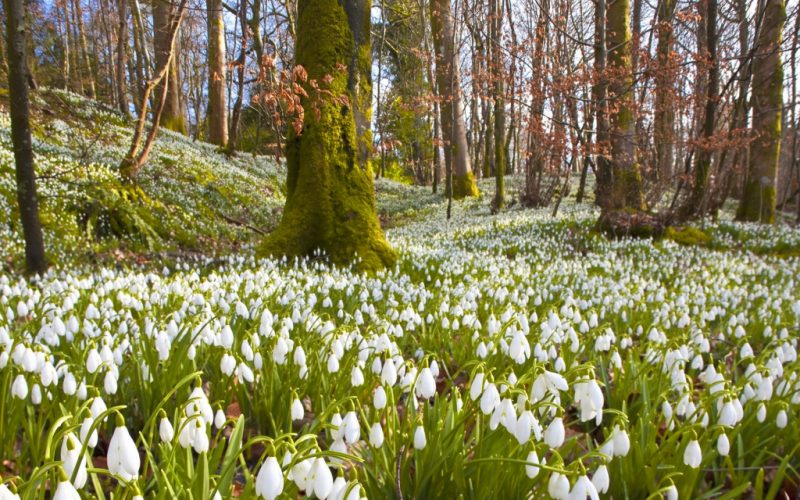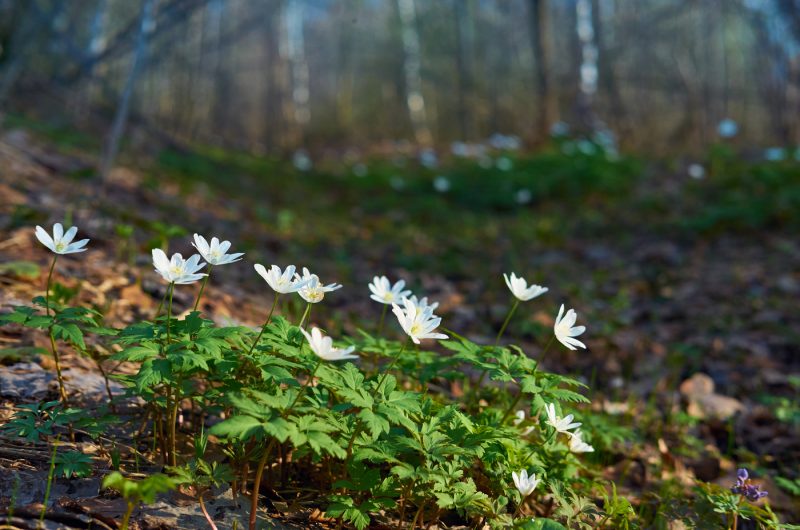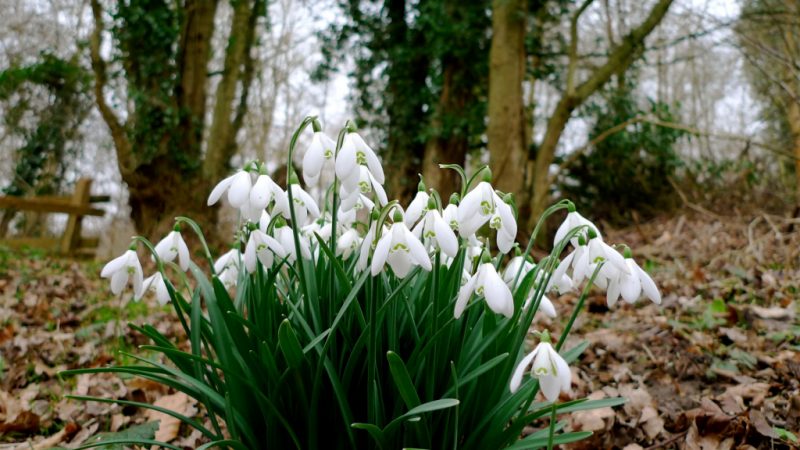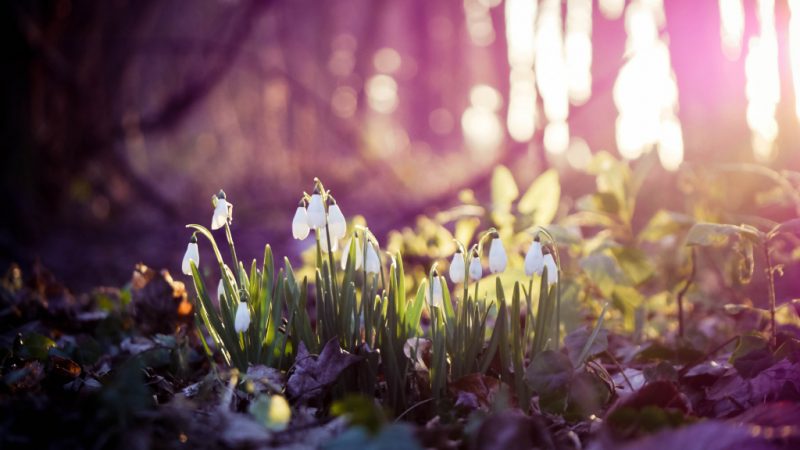The legendary snowdrops, flowers that have become a symbol of spring and hope, are loved by many. They remind us of the great power of life for any of us. Every spring in a forest glade where snowdrops grow, a real miracle wakes up. White petals surprise and delight with the change of winter cold to the long-awaited heat. The name of these touching flowers in Russian is clear to everyone. In English, they are also called very beautifully - Snowdrop - "snowdrop".
Material Content:
When snowdrops appear
Snowdrops, or Galanthus, live throughout the vast territory of Eurasia. Their range is common in North America. They grow in different climatic zones, so the timing of their flowering is ambiguous. Galanthus bloom earlier in the south, in some places at the end of January and February. In the more northern territories, their flowering period falls on March - April.

In one locality, snowdrops bloom for a month. But on the whole continent - about four. However, there are exceptions. For example, one of the species - broadleaf snowdrop - blooms in July. The secret is that it is common in the mountains, where climatic zones are located vertically. And only in the summer there is snow falling and the "spring" comes.
Another wonderful plant is called Corfu primrose. This is also a snowdrop, which grows on the island of Corfu (Sicily). It blooms in November, because in the hot south of Italy it is in the autumn that those favorable conditions are formed that are suitable for the flowering of this plant.
Where the first spring flowers grow in Russia
Where do snowdrops grow in Russia? The whole country accounts for the habitat of 16 species of snowdrops. These are the foothills of the Caucasus and alpine meadows, the banks of the Don.However, in general, primroses, which are popularly called snowdrops, can be found in the forests of Siberia and in the suburbs.

Their main habitat is alpine meadows and forests. Especially these plants like to settle in forest glades, where there is more sunlight and heat. They choose places that are protected from the cold spring wind.
As decorative, galanthus can be planted in all regions of Russia. Garden snowdrops are larger, they can decorate flower beds and flower beds in early spring. This is a real miracle when delicate flowers appear on the alpine slides, and in some places there is still snow in the garden.
Description of the types of snowdrops with photos

Here are some of the most prominent representatives of snowdrop species growing in Russia:
- One of the largest is a representative of a species called Caucasicus. It lives in the Stavropol Territory, Krasnodar Territory, in the foothills of the Caucasus and in Georgia. It is endemic, nowhere else in the world can it be found. Unfortunately, this species is on the verge of destruction. It is listed in the Red Book of Russia.
- A rare flower specially protected by the laws of Russia is the snowdrop Alpinus. It grows in the North Caucasus, most often found in the vicinity of Maykop, in the Kish gorge, in the Krasnodar Territory. This is a very beautiful plant up to 20 cm tall with large flowers up to 25 mm. Green leaves covered with bluish bloom
- The beautiful snowdrop of Bortkevich is a medicinal plant. Distributed in Kabardino-Balkaria, in the vicinity of Nalchik. Unfortunately, it is subject to extermination and may very soon disappear altogether from the face of the earth. Since it propagates only in a vegetative way, unlike its counterparts, who also use seeds for this purpose. In addition, Bortkevich’s snowdrop does not tolerate a transplant, bulbs almost never take root in a new place. Particularly affected by uncontrolled collection. Since the bulb is small in size and easily pulled out of the ground along with the stem.
- Another rare species is the galanthus Voronova. Grows along the Black Sea coast of the Krasnodar Territory. One of its most important habitats was Krasnaya Polyana. Since Soviet times, it has been a protected species, endangered. It is recommended to grow in gardens, cultivate as a medicinal plant.
Myths and legends associated with flowers
Many beautiful legends have been created by different peoples of the world about snow-white primroses. In myths, the image of a flower appears before us as a sign of hope sent over from above for comfort and comfort at a time of adversity and misfortune.

It is a symbol of the struggle of life and death, spring and winter, heat and cold.
For example, one of the Christian legends says that Adam and Eve suffered when they were expelled by God from paradise. Outside of Eden, difficult trials awaited them. Out of pleasant warmth and joy, they fell into the harsh snow-covered lands, where it was cold and impossible to hide from the weather. The first people wandered through the snowdrifts in the forest, not understanding how to survive such a harsh time. Eve despaired, and tears rolled from her eyes. Suddenly, several beautiful snowflakes that circled next to her turned into delicate white snowdrops with a pleasant subtle smell. It was God who performed a miracle for her so that she could console herself and find hope in his soul.
In England, there is a tradition that sometimes a ghost of a gentleman in old clothes with a snowdrop in his buttonhole accompanies guests in the Bekonofildov’s castle. A similar custom to wear a flower in the buttonhole of an uniform existed among officers during the Crimean War. A ghost is one of the former owners of the castle, a lord, a former military man.
When snowdrop day is celebrated
Snowdrop Day is celebrated on our calendar every year on April 19th. For the first time this day was a holiday in the UK. Then other countries where these flowers are widespread joined such a wonderful tradition.

What is the meaning of the holiday? The fact is that snowdrop flowers, like all primroses, are threatened with extinction on our planet. Therefore, the celebration of Snowdrop Day was the day of protection of beautiful plants from poachers. A kind of reminder of how fragile life on Earth is.
The holiday was born precisely in England because there there is a special relationship to these flowers. The British are very fond of primrose, as a symbol of innocence and a flower of hope. From ancient times it is believed that he is able to drive away evil spirits, to be the protection of the hearth. Therefore, snowdrops are grown everywhere - in gardens, flower pots on window sills, the porch of the house.
The date of the celebration of Snowdrop Day is also not chosen by chance. This is the death date of the famous English writer Disraeli, who lived and worked in the 19th century. In his works he magnified England, and his favorite flowers were snowdrops.












